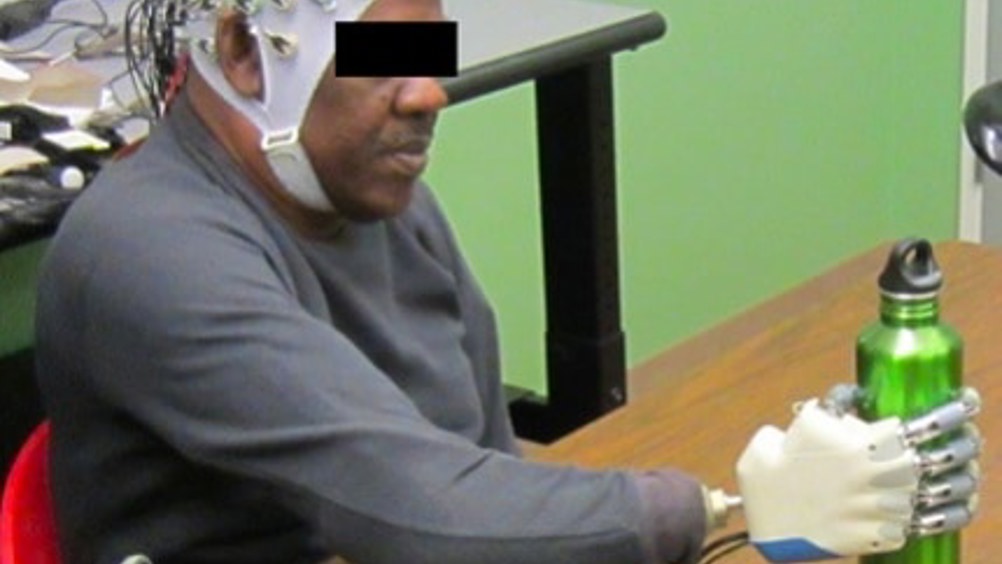US researchers demonstrate thought-controlled bionic hand
A non-invasive brain-machine interface could help usher in a new geration of smart prosthetics claim researchers in the US

The team from the University of Houston has created an algorithm that allowed a man to grasp a bottle and other objects with a prosthetic hand that was powered only by his thoughts
The technique, demonstrated with a 56-year-old man whose right hand had been amputated, uses non-invasive brain monitoring, capturing brain activity to determine what parts of the brain are involved in grasping an object.
With that information, researchers created a computer program, or brain-machine interface (BMI), that harnessed the subject’s intentions and allowed him to successfully grasp objects, including a water bottle and a credit card. The subject grasped the selected objects 80 per cent of the time using a high-tech bionic hand fitted to the amputee’s stump.
Previous studies involving either surgically implanted electrodes or myoelectric control, which relies upon electrical signals from muscles in the arm, have shown similar success rates, according to the researchers.
Register now to continue reading
Thanks for visiting The Engineer. You’ve now reached your monthly limit of news stories. Register for free to unlock unlimited access to all of our news coverage, as well as premium content including opinion, in-depth features and special reports.
Benefits of registering
-
In-depth insights and coverage of key emerging trends
-
Unrestricted access to special reports throughout the year
-
Daily technology news delivered straight to your inbox











Water Sector Talent Exodus Could Cripple The Sector
Maybe if things are essential for the running of a country and we want to pay a fair price we should be running these utilities on a not for profit...